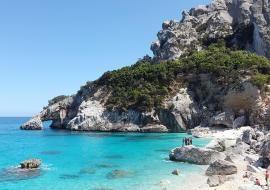International Tourism on Track for a Rebound after an Exceptionally Challenging 2009


Growth returned to international tourism in the last quarter of 2009 contributing to better than expected full-year results, according to the latest edition of the UNWTO World Tourism Barometer. International tourist arrivals fell by an estimated 4 percent in 2009. Prospects have also improved with arrivals now forecast to grow between 3 percent and 4 percent in 2010. This outlook is confirmed by the remarkable rise of the UNWTO Panel of Experts’ Confidence Index.
International tourist arrivals for business, leisure and other purposes are estimated to have declined worldwide by 4 percent in 2009 to 880 million. This represents a slight improvement on the previous estimate as a result of the 2 percent upswing in the last quarter of 2009. In contrast, international tourist arrivals shrank by 10 percent, 7 percent and 2 percent in the first three quarters respectively. Asia and the Pacific and the Middle East led the recovery with growth already turning positive in both regions in the second half of 2009.
“The global economic crisis aggravated by the uncertainty around the A (H1N1) pandemic turned 2009 into one of the toughest years for the tourism sector’, said UNWTO Secretary-General, Taleb Rifai. “However, the results of recent months suggest that recovery is underway, and even somewhat earlier and at a stronger pace than initially expected’, he added.
Experience shows that tourism earnings generally follow the trend in arrivals quite closely, even if they suffer somewhat more in difficult times. Based on the trends through the first three quarters, receipts for 2009 are estimated to have decreased by around 6 percent.
While this is unquestionably a disappointing result for an industry accustomed to continuous growth, it can also be interpreted as a sign of comparative resilience given the extremely difficult economic environment. This becomes even more evident when compared with the estimated 12 percent slump in overall exports as a consequence of the global crisis.
Similarly to the situation in previous crisis, consumers tended to travel closer to home during 2009. Several destinations have seen domestic tourism endure the crisis better and even grow significantly, often with the support of specific government measures aimed at leveraging this trend. This was the case among many other countries, of China, Brazil and Spain, where the domestic market, representing a large share of the total demand, contributed to partially offsetting the decline in international tourism.
Europe ended 2009 down 6 percent after a very complicated first half (-10 percent). Destinations in Central, Eastern and Northern Europe were particularly badly hit, while results in Western, Southern and Mediterranean Europe were relatively better.
Asia and the Pacific (-2 percent) showed an extraordinary rebound. While arrivals declined by 7 percent between January and June, the second half of 2009 saw 3 percent growth reflecting improved regional economic results and prospects.
In the Americas (-5 percent), the Caribbean returned to growth in the last four months of 2009. The performance was more sluggish in the other sub-regions, with the A(H1N1) influenza outbreak exacerbating the impact of the economic crisis.
The Middle East (-6 percent), though still far from the growth levels of previous years, had a positive second half in 2009. Africa (+5 percent) was a robust performer, with sub-Saharan destinations doing particularly well.
By region, Asia is expected to continue showing the strongest rebound, while Europe and the Americas are likely to recover at a more moderate pace. Growth is expected to return to the Middle East while Africa will continue its positive trend benefiting from the extra boost provided by the 2010 FIFA World Cup in South Africa.














